The author of this report, whom we called Mr. Traveller, is a Ph.D. student majoring in Physics. In the past few years, he recorded those beautiful birds flying in the woods of HUST.

Hoopoe (Upupa epops) is a bird in the Upupidae family. The picture was taken in the Youth Park. I mistook it for a woodpecker at first, but in fact, a woodpecker’s bill is shorter than a hoopoe’s. If you had followed a microblogger named “Bowu Magazine”, you would know that his pet is a hoopoe.
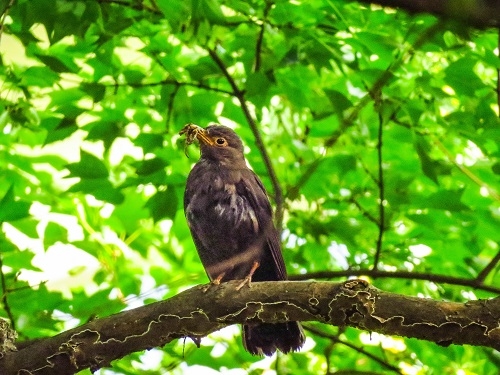
Common Blackbird (Turdus merula) is a bird in the Turdidae family. The picture was taken in the Youth Park. It is a common resident breeding bird in southern China which is often mistaken for a crow. But compared with the crow, the common blackbird is smaller and has a melodious song. Its yellow bill is also different from the crow’s black one.

Japanese thrush (Turdus cardis) is a bird in the Turdidae family. The picture was taken in the Youth Park. When I took this picture, I also wrote down the following words: “It was a perfect afternoon. After the rain the park was extraordinarily quiet. Mr. Thrush jumped on a branch and started to sing. His voice is so clear that purify every listener’s soul. Listen! What a melodious song!”
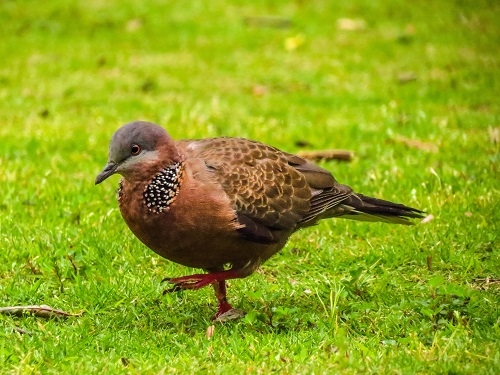
Spotted dove (Spilopelia chinensis) is a bird in the Columbidae family. The picture was taken in the Youth Park. It is a small and somewhat long-tailed pigeon with a white-spotted black collar patch on the back and sides of the neck. This dove can be often seen if you walking around the Zisong Residential Area in the morning.

Oriental Turtle Dove (Streptopelia Orientalis) is a bird in the Columbidae family. The picture was taken in the Youth Park. This small species is very similar in habit to the spotted dove. Different from spotted dove, it has a grey tip to the tail and more black in the outer web of the outer tail feathers.
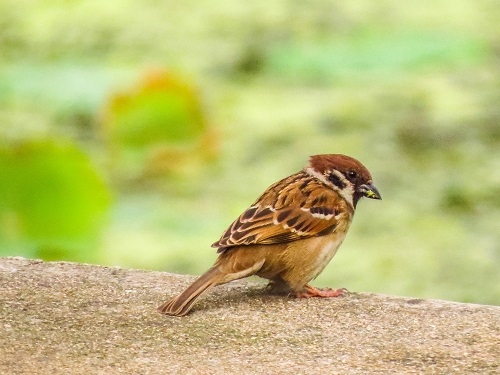
Eurasian Tree Sparrow (Passer montanus) is a bird in the sparrow family. The picture was taken in the Youth Park. It is also known as the tree sparrow. It is the most common bird in China, which features a black patch on each pure white cheek.
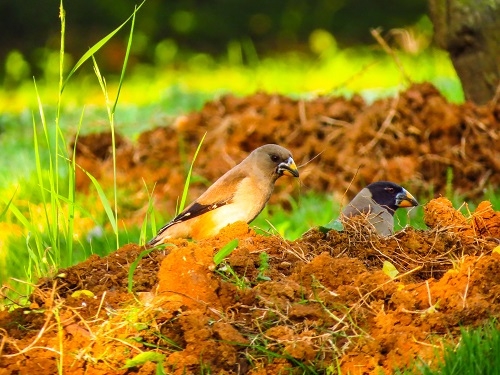
Chinese Grosbeak (Eophona migratoria) is a bird in the Fringillidae family. The picture was taken in the Youth Park. Compared with the previous pictures, this picture is more vivid and casual. Its breeding season ranges from May to July. During this period, the adults will collect blades of grass and twigs to nest. Since Chinese Grosbeaks are social animals, in the winter you can often see a large flock of them fly up from the grass together and hide in the Youth Park rapidly.
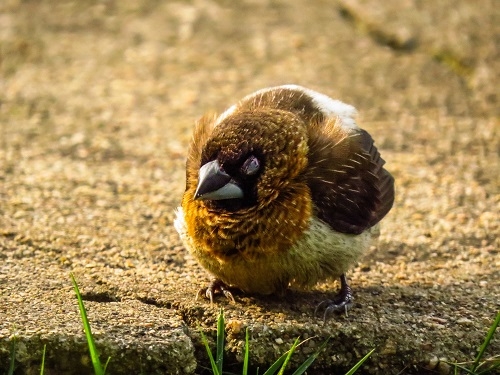
White-rumped Munia (Lonchura striata) is a bird in the Estrildidae family. The picture was taken in the Youth Park. It was a sunny morning when I took this picture. I was sitting on the lawn and taking pictures of the birds in the pond when a flock of White-rumped Munias flied over the pond and landed on the lawn. I turned around gently and began to take pictures of these lovely birds. Fortunately, these little birds just ignored me and put all the focus on grass seeds. In order not to disturb them, I chose to stop in a distance of one meter from them and took pictures of them.

Asian paradise flycatcher (Terpsiphone paradisi) is a bird in the Monarchidae family. The picture was taken in the Youth Park. In a manner of speaking, the Asian paradise flycatcher is one of the most beautiful birds in the Youth Park. That day I was wandering in the Youth Park when I suddenly heard a chirp that is unfamiliar to me. The chirp made my heart leap with joy, since I knew that there must be a new species of bird in the park according to my experience. After a few minutes, I successfully found the Asian paradise flycatcher. It’s so fascinating. Its blue upper parts, maroon underparts and eyes which are surrounded by an eye ring that is a blue thin wattle are all fascinating. How lucky was I to meet it!
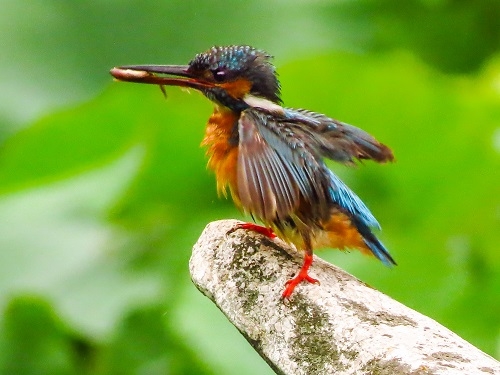
Common kingfisher (Alcedo atthis) is a bird in the Alcedinidae family. The picture was taken in the Youth Park. It has blue upperparts, orange underparts and light red feet, which is small but lovely. People can often see a kingfisher perch on the statue which stands in the middle of the pond and look at the water intently. Suddenly, it hurtled into the water like an arrow and snatched up a fish with its bill within seconds.

Light-vented Bulbul (Pycnonotus sinensis) is a bird in the bulbul family. The picture was taken in the Youth Park. When I was young, what waked me up was not only the sunlight but also the chirps of light-vented bulbuls. Therefore, this bird which is really common always holds a special meaning for me.
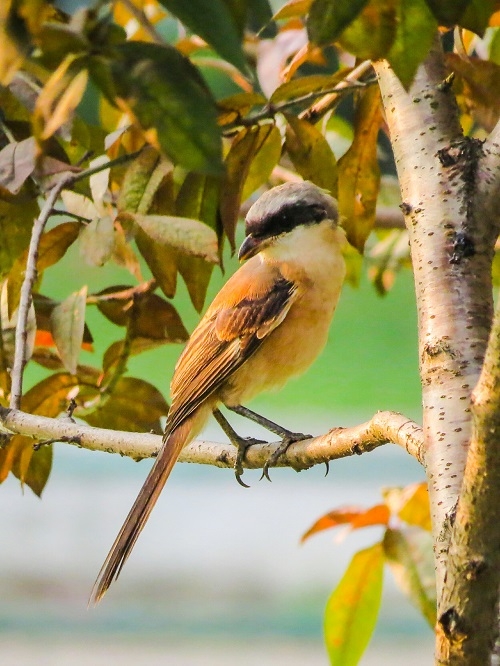
Long-tailed Shrike (Lanius schach) is a bird in the Laniidae family. The picture was taken in the Youth Park. The dark mask through its eye often reminds people of the movie The Mask of Zorro. This species is known as “butcher bird” because of its feeding habits. With strong bills and claws, they can even hunt the birds which are bigger than themselves.

Masked laughingthrush (Garrulax perspicillatus) is a bird in the Leiothrichidae family. The picture was taken in the Youth Park. As their name indicates, during the breeding season masked laughing thrushes becomes noise makers.
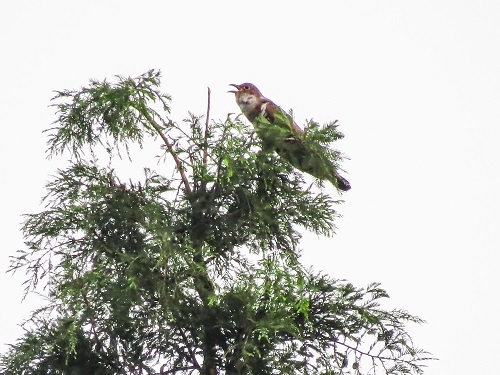
Indian cuckoo (Cuculus Micropterus) is a bird in the Cuculidae family. The picture was taken in the Youth Park. Its call is loud with four notes. They have been transcribed as "orange-pekoe", "bo-ko-ta-ko", "crossword puzzle" or "one more bottle". It was a summer day. At dusk, a cuckoo perched on the treetop and sang. Its voice was so loud and melodies that can be heard in every corner of the park. After a few minutes, I successfully found it and took this picture.

Common Moorhen (Gallinula chloropus) is a bird in the Rallidae family. The picture was taken in the Youth Park. Its older name, common waterhen, is more descriptive of the bird's habitat, and it significantly differs from hen. You can easily find moorhens when you pass by the pond. They like to nest beside the statue which stands in the middle of the pond. In this picture, you can see eggs and baby moorhens.

Little grebe (Tachybaptus ruficollis) is a bird in the grebe family. The picture was taken in the Youth Park. Little grebes can be often seen in the pond of the Youth Park. Though they are mistaken for wild ducks by many people, they are not close relatives to ducks. In the summer of 2015, I noticed that little grebes were incubating the eggs and then decided to do a follow-up shot. I used my camera to record the growth of these little grebes.
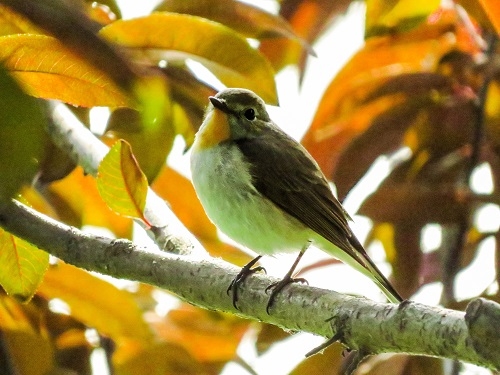
Taiga Flycatcher (Ficedula albicilla) is a bird in the Muscicapidae family. The picture was taken in the Youth Park. Its orange-red coloration on the throats often reminds me of babies’ bibs.

Oriental Magpie-Robin (Copsychus saularis) is a bird in the Turdidae family. The picture was taken in the Youth Park. It is a distinctive black and white bird which looks quite similar to magpie. Its long tail which is held upright as it forages on the ground and melodious song make it seem to be more vivacious.

Common magpie (Pica pica) is a bird in the crow family. The picture was taken in West-Twelve Teaching Building. The common magpie is twice the length of the oriental magpie-robin. Its strong figure is well matched to its valor and vigor. They bravely drive away any birds that invade their territory, even if those invaders are raptors. In China, magpie is a symbol of auspiciousness. Its Latin name, Pica Pica, is also very interesting.
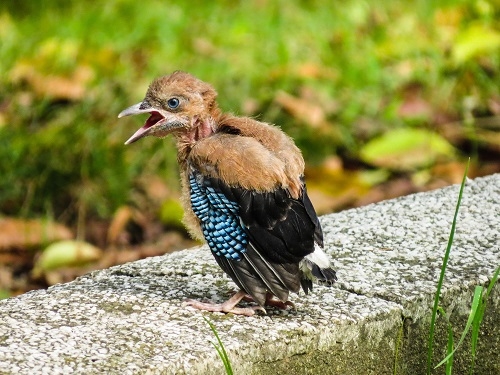
Eurasian jay (Garrulus glandarius) is a bird in the crow family. The picture was taken in the Youth Park. The little bird in the picture seems to be very hungry. What a lovable bird! By the way, homeless dogs and cats do pose a threat to those wild birds.

Azure-winged magpie (Cyanopica cyanus) is a bird in the crow family. The picture was taken in the Youth Park. The internal monologue of Mr. Magpie: “Why it is always hungry?”

Chinese pond heron (Ardeola bacchus) is a bird in the heron family. The picture was taken in the Youth Park. This species is often seen in summer.
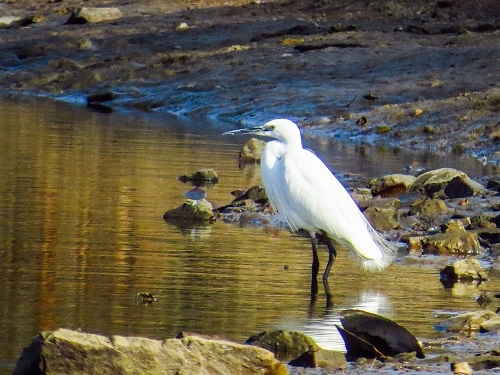
Little egret (Egretta garzetta)) is a bird in the heron family. The picture was taken in the East-Nine Lake. Since I live in the western part of the campus, I have few chances to visit the East-Nine Lake which is located in the eastern part of the campus. The East-Nine Lake is the habitat of many species, such as little egrets which are as elegant as fairies dressing in white.

Black-winged stilt (Himantopus himantopus) is a bird in the stilt family. The picture was taken in the East-Nine Lake. In winter, people can often see black-winged stilts forage in waters off the shoal. Except for black-winged stilts, green sandpipers and black-headed gulls are widely seen as well.
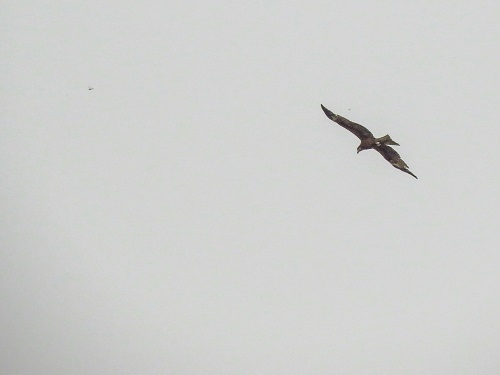
Black-eared Kite (Milvus migrans lineatus) is a bird in the Accipitridae family. The picture was taken in the East-Nine Lake. Black-eared Kite is the most common raptor in China and one of China's second-class protected animal species. For me, it is a symbol of sky and freedom.
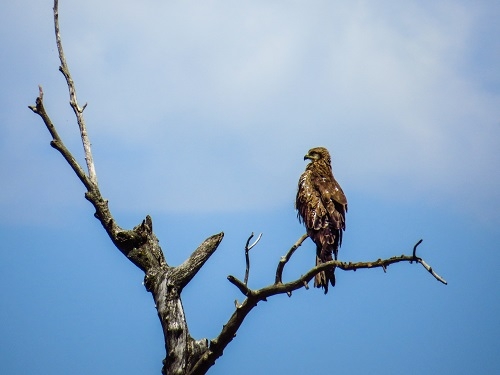
The black-eared Kite standing on the tree.
